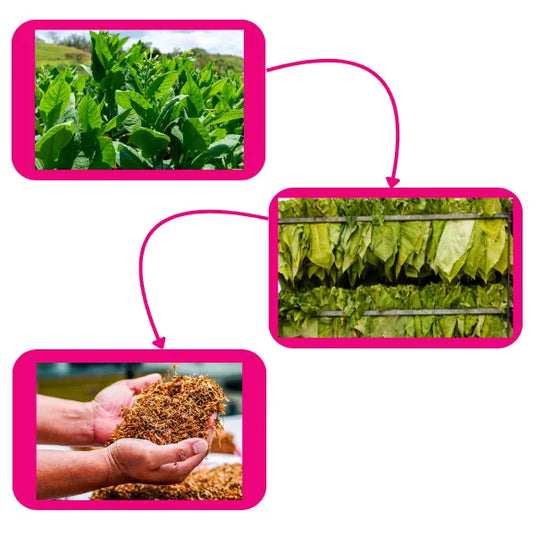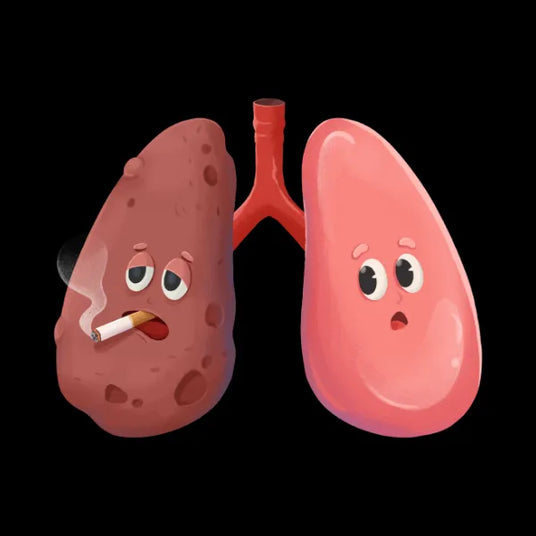What is Nicotine?
Unpacking the Truth About this Powerful Substance
When you hear nicotine, what comes to mind? For many, it's immediately linked to tobacco and cigarette smoking. But what is nicotine, truly? It's a fascinating and complex chemical, and understanding it is key to navigating the world of nicotine products, from traditional tobacco products to modern alternatives.

Nicotine: A Naturally Occurring Compound with a Kick
At its core, nicotine is a chemical compound known as an alkaloid. It’s naturally found in tobacco leaves, specifically from the tobacco plant, where it acts as a natural pest deterrent. While present in small amount of nicotine in other plants we eat, like tomatoes and potatoes, it's the tobacco plant that contains it in significant concentrations.
For centuries, the primary way people who use tobacco have consumed nicotine is by smoking tobacco in cigarettes, cigars, or using smokeless tobacco like chewing tobacco and snus.
The Effects of Nicotine on Your Body and Brain
When nicotine enters your body—whether you smoke cigarettes, use tobacco products, or use modern alternatives—it quickly travels to your brain. This stimulant found in tobacco binds to specific areas in the brain called nicotine receptors. This interaction triggers the release of neurotransmitters, particularly dopamine, which is associated with feelings of pleasure and reward. This swift response, often reaching the brain within seconds, is a major factor in why nicotine is addictive.
The effects of nicotine can include increased alertness, improved concentration, and a temporary sense of well-being. However, these are often followed by the powerful drive to continue using nicotine due to its highly addictive chemical properties.
There is also the potential for unwanted side-effects, particularly in those who are not used to nicotine or absorb a higher concentration than they are used to. Such as nausea, hiccups and more.
The Truth About Nicotine Addiction
It's vital to state clearly: nicotine is addictive. When you regularly use tobacco or other products containing nicotine, your brain adapts, and you can quickly become addicted and dependent on nicotine.
This dependence means that when you try to quit smoking or stop nicotine use, you'll likely experience nicotine withdrawal symptoms. These can include intense craving for nicotine, irritability, anxiety, difficulty concentrating, and even physical discomfort. These withdrawal from nicotine effects make it incredibly hard to quit, even when people who use tobacco products are aware of the serious health risks associated with their habits. Understanding addiction and withdrawal is crucial for anyone looking to break free from nicotine.

Nicotine and Health: Separating Fact from Fiction
This is where it gets crucial. While nicotine is addictive, it's primarily the act of smoking tobacco and the exposure to tobacco smoke that causes the most serious health risks. Tobacco smoke contains thousands of harmful chemicals found in cigarette smoke, many of which are carcinogens (cancer-causing agents). These chemicals, not nicotine itself, are responsible for diseases like lung cancer, lung disease, heart disease, and other serious health conditions. The harmful effects of smoking are well-documented and represent the leading preventable cause of death.
Nicotine exposure also has its own potential health effects, but these are generally less severe than those caused by burning tobacco. Nicotine can cause an increase in heart rate and blood pressure, particularly at higher level of nicotine concentrations. However, it's the multitude of chemicals found in cigarette smoke that are the primary culprits behind smoking-related diseases.
Modern Nicotine Products: A Different Approach
The tobacco industry has historically focused on combustible tobacco products. However, a new generation of nicotine products aims to deliver nicotine without the burning process.
-
Nicotine Pouches
These innovative smokeless tobacco-free pouches represent a significant shift in nicotine product delivery. Unlike traditional tobacco products that you smoke or chew, nicotine pouches contain no actual tobacco leaf. Instead, they're typically filled with a mix of high-grade, purified nicotine (either derived from the tobacco plant or synthetic), plant-based fibres, water, flavourings, and sweeteners.
To use nicotine pouches, you simply place a small pouch discreetly between your gum and upper or lower lip. The oral nicotine is then slowly absorbs nicotine through the lining of your mouth, providing a steady and sustained level of nicotine without any tobacco smoke, smoke cigarettes, or vapour. This means there's no need for lighting up, no unpleasant odours, and no expulsion of tobacco smoke or e-cigarette vapour, making them a remarkably discreet way to use nicotine.
-
Vaping or e-cigarettes
These electronic cigarettes heat an e-cigarette liquid (or e-liquid) that contain nicotine along with flavourings, producing a vapour that is inhaled. While not risk-free, vaping products are generally considered by many public health bodies to be significantly less harmful than smoking or vaping traditional cigarettes, as they eliminate exposure to tobacco smoke. The Food and Drug Administration (FDA) in the US and other health organisations, such as the NHS in the UK, continue to research the health risks associated with e-cigarette use, especially in youth and young adults.
-
Nicotine Replacement Therapies (NRTs)
Products like nicotine gum, lozenge, nicotine patches, and nasal spray are specifically designed to help people who use tobacco manage their nicotine withdrawal symptoms and quit tobacco use. They provide controlled doses of nicotine, helping to reduce the craving and other difficult aspects of quitting tobacco.
Best Sellers
View allYour Path to Quitting
Understanding what is nicotine and its role in addiction is the first step towards taking control. If you're a tobacco user and want to quit, there are numerous resources to help you quit. Speaking to a health care provider can offer personalised advice and support, guiding you through options for quitting tobacco and managing nicotine withdrawal.
Remember, while nicotine is a highly addictive drug, it's the use of cigarettes and other combustible tobacco products that leads to the most serious health risks including lung disease and lung cancer. Knowing the facts empowers you to make informed decisions for your health and future.
Frequently Asked Questions About Nicotine
Is nicotine a carcinogen (cancer-causing)?
Is nicotine a carcinogen (cancer-causing)?
No, nicotine itself is not classified as a carcinogen. The vast majority of cancer-causing chemicals are found in tobacco smoke, produced by the burning of tobacco. While nicotine is addictive, it's the other harmful substances in tobacco products that pose the primary risk for diseases like lung cancer.
Can using nicotine cause a 'buzz' or euphoric feeling?
Can using nicotine cause a 'buzz' or euphoric feeling?
Yes, when nicotine reaches the brain, it can trigger the release of dopamine, leading to feelings of pleasure and reward. This rapid effect is part of why nicotine is addictive and contributes to the 'buzz' or mild euphoric sensation some people who use it describe, especially when first taking nicotine or after a period of abstinence.
How quickly does nicotine affect the brain after consumption?
How quickly does nicotine affect the brain after consumption?
Nicotine is incredibly fast-acting. Whether from smoking, vaping, or using nicotine pouches, it typically reaches the brain within seconds of entering the bloodstream. This rapid delivery plays a significant role in its addictive potential, as the almost immediate reward reinforces the nicotine use behaviour.
Does nicotine have any therapeutic uses?
Does nicotine have any therapeutic uses?
While not widely used therapeutically outside of nicotine replacement therapies for smoking cessation, research has explored nicotine's potential as a cognitive enhancer due to its stimulant properties. However, its addictive nature and potential side effects of nicotine mean it's not a general therapeutic agent.
What's the main difference between nicotine pouches and traditional snus?
What's the main difference between nicotine pouches and traditional snus?
The key difference is the absence of tobacco leaf. Nicotine pouches are entirely tobacco-free, delivering nicotine from purified sources. Traditional snus, while a form of smokeless tobacco, contains actual ground tobacco plant material, which means it carries different chemical profiles and associated risks.
If I stop using nicotine, how long do withdrawal symptoms last?
If I stop using nicotine, how long do withdrawal symptoms last?
The duration of nicotine withdrawal symptoms can vary greatly from person to person, but typically the most intense withdrawal from nicotine symptoms peak within the first few days to a week after quitting tobacco or nicotine. Lingering craving can persist for weeks or even months, but generally, the acute physical symptoms subside within 2-4 weeks. Resources to help you quit can provide support during this period.
Author Bio
Lewis Cash






























